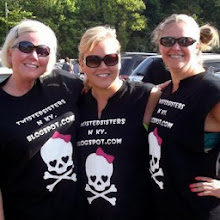
For many generations the gruesome tale of Sawney Bean and his family of cannibals has scared children and adults alike. It was only when one man escaped and reported an attack which had cost the life of his wife, that a full-scale search for the ruthless killers was undertaken.
The truth of the legend is hard to discern at this distance, but it is generally agreed that there were certainly instances of cannibalism during the famines of the 14th and 15th Centuries in Scotland. The earliest printed references to Sawney Bean appear to be in broadsheets printed in England in the first half of the 18th Century. The most widespread version of the tale seems to originate in Historical and Traditional Tales Connected with the South of Scotland by John Nicholson (1843).
The Grisly Tale of Sawney Bean
Born sometime in the late 14th Century in East Lothian, the son of a ditch-digger and hedger, Alexander (Sawney) Bean is said to have been work-shy and dishonest. He married a woman as vicious and idle as himself and, being shunned by their neighbours, they moved to the West coast of Scotland and settled in a deep cave at Bennane Head, near Ballantrae (then Galloway, now South Ayrshire), where they lived for the next 25 years or so. It is reported that they had 14 children and that through incestuous relations the family eventually numbered some 48 people.
It appears that from the start it was Bean’s plan to exist on the profits of robbery by ambushing travellers on the lonely narrow roads that connected the villages of the area. To avoid being identified and captured he murdered his victims, and from there it was a short step to using their bodies to provide food. The caves at Bennane were well suited for his purpose, with tunnels through solid rock extending for more than a mile in length. The family took good care to avoid all other residents of the sparsely populated area and it was never suspected that anyone lived there.
Not unnaturally the numbers of people disappearing accompanied by the washing up on shore of decayed body parts alarmed the country round about. The authorities concerned were forced to take steps and in fact several inn-keepers were accused and even executed on no more grounds than that travellers who had disappeared were known to have spent the night on their premises.
It was only when one man escaped and reported an attack which had cost the life of his wife, that a full-scale search for the ruthless killers was undertaken. The public outcry caused by the reports of these horrible events was such that King James I of Scotland (1394-1437) led a troop of some 400 soldiers accompanied by several bloodhounds. Following one the largest manhunts ever seen in Scotland, the tracker dogs, attracted by the scent of decaying flesh, led the soldiers to the cave entrance.
Following a short fight the vastly out-numbered Bean clan were arrested and the contents of the cave revealed. The horrific discovery of the remains of human bodies and evidence of cannibalism, along with the loot gathered from their robberies, was thought to render a trial unnecessary and the family were immediately taken in chains to Edinburgh for public execution.
Their execution was especially gruesome. The women of the clan were forced to watch while their men had their arms and legs cut off that they might bleed to death as so many of their victims had. The women were thereafter burned to death.
The traditional Scots1 ‘Ballad of Sawney Bean’ documents the end of the Bean Clan:
They’ve hung them high in Edinburgh toon
An likewise a their kin
An the wind blaws cauld on a their banes
An tae hell they a hae gaen.
(Translation:
‘They have hung them high in Edinburgh town
And likewise all their family
And the wind blows cold on all their bones
And to hell they all have gone.’)





No comments:
Post a Comment